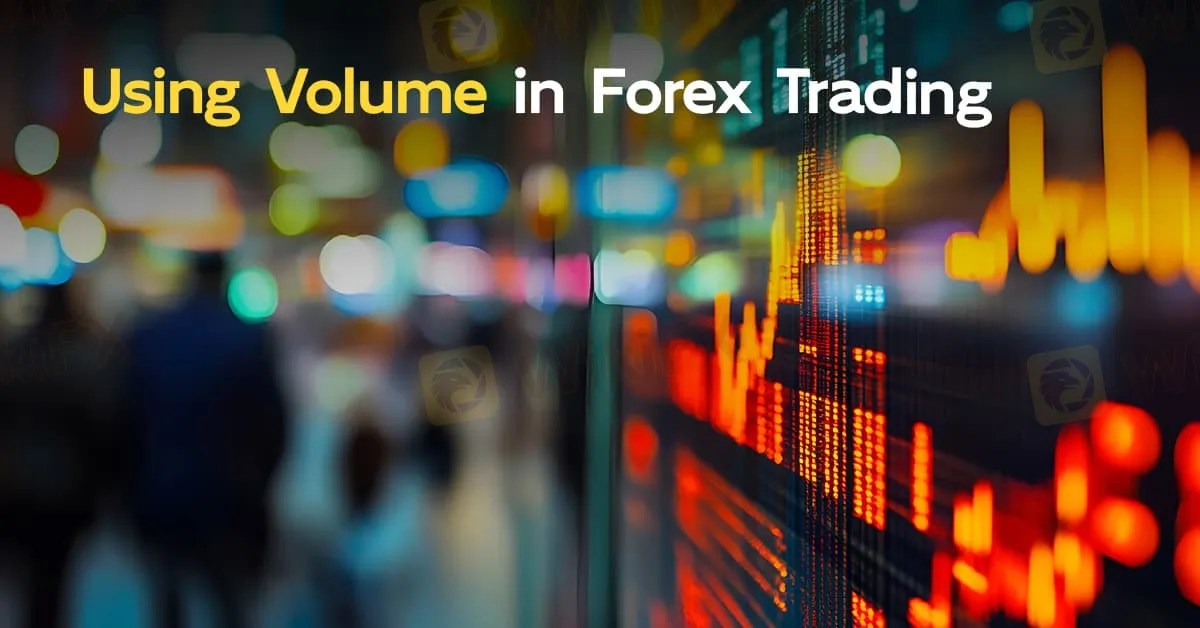简体中文
繁體中文
English
Pусский
日本語
ภาษาไทย
Tiếng Việt
Bahasa Indonesia
Español
हिन्दी
Filippiiniläinen
Français
Deutsch
Português
Türkçe
한국어
العربية
Using Volume in Forex Trading
Sommario:Price movement in the market often reflects the rhythm of trading volume, with higher volumes propelling prices forward like waves in the ocean. Sometimes, these waves form part of a broader trend, pushing prices steadily in one direction. Other times, the market is choppy, with sudden bursts of volume leading to erratic price behavior. And when the volume is low, price movements tend to be narrow and subdued, much like a still and quiet sea.

Price movement in the market often reflects the rhythm of trading volume, with higher volumes propelling prices forward like waves in the ocean. Sometimes, these waves form part of a broader trend, pushing prices steadily in one direction. Other times, the market is choppy, with sudden bursts of volume leading to erratic price behavior. And when the volume is low, price movements tend to be narrow and subdued, much like a still and quiet sea.
No matter the state of the market, price movement is fundamentally connected to volume. However, many traders, myself included, tend to focus on price patterns without fully considering the impact of volume. From what Ive seen on various trading forums, this is a common practice, though overlooking volume can mean missing out on critical information.
Lets explore the significance of volume in Forex trading and how understanding it can lead to more informed trading decisions.
What is Volume in Forex?
Volume in trading represents the total number of transactions or units traded during a specified time frame. For instance, in a daily chart, each volume bar represents the number of units traded over that day. In an hourly chart, the volume bar shows the transactions within that hour.
However, in the decentralized world of Forex, volume works a little differently compared to centralized markets like stocks or futures, which are traded on exchanges like the NYSE or CME.
How Volume is Calculated in Forex
Forex operates as an over-the-counter (OTC) market, meaning there‘s no central exchange where all trades are recorded. As a result, the volume data that appears on a broker’s chart reflects only the activity within that broker‘s platform. This data can differ significantly from one broker to another since it doesn’t represent the entire Forex market.
This limitation also applies to other OTC markets, such as CFDs and cryptocurrencies. In centralized markets, like equities and futures, brokers report the actual volume from the exchange, meaning all traders see the same volume figures regardless of their broker.
In Forex, brokers typically use “tick volume” to measure market activity. Tick volume counts the number of price changes or “ticks” during a given period rather than the total value of trades. While it doesnt show the true volume of money traded, it is widely accepted by traders as a reliable indicator of market activity. In many cases, tick volume correlates closely with actual trading volume and can still be used effectively in technical analysis.
The Importance of Volume in Trading
Volume can offer crucial insights into the strength or weakness of price movements. When volume is high during a price move, it indicates strong market interest, suggesting the trend is likely to continue. Conversely, low volume during a price move could signal a lack of conviction and a potential reversal.
By using volume alongside price action, traders can gain a deeper understanding of market sentiment. For example, a breakout accompanied by high volume is more likely to be sustainable than one with low volume, which might be a false signal. Similarly, a reversal that occurs in high volume may indicate a significant shift in market direction.
Conclusion
Volume is an often-underappreciated tool in technical analysis, yet it provides valuable insights that go beyond price alone. Whether youre trading Forex or other markets, paying attention to volume can help you confirm trends, spot potential reversals, and better understand market dynamics. Although Forex traders rely on tick volume due to the decentralized nature of the market, this metric can still offer meaningful clues about market activity and improve trading strategies. By incorporating volume into your analysis, you can make more informed and confident trading decisions.

Disclaimer:
Le opinioni di questo articolo rappresentano solo le opinioni personali dell’autore e non costituiscono consulenza in materia di investimenti per questa piattaforma. La piattaforma non garantisce l’accuratezza, la completezza e la tempestività delle informazioni relative all’articolo, né è responsabile delle perdite causate dall’uso o dall’affidamento delle informazioni relative all’articolo.
WikiFX Trader
STARTRADER
FXTM
VT Markets
FxPro
TMGM
Tickmill
STARTRADER
FXTM
VT Markets
FxPro
TMGM
Tickmill
WikiFX Trader
STARTRADER
FXTM
VT Markets
FxPro
TMGM
Tickmill
STARTRADER
FXTM
VT Markets
FxPro
TMGM
Tickmill
Rate Calc


